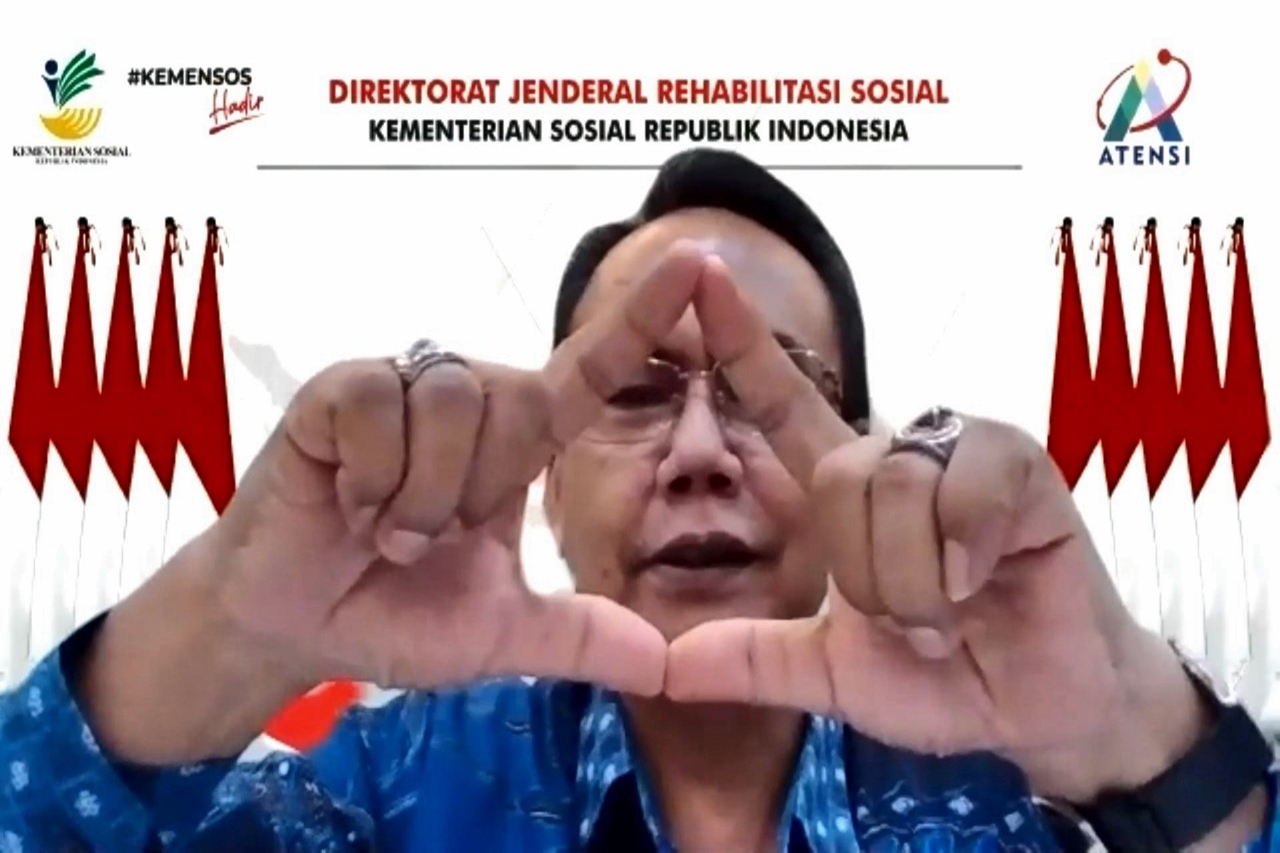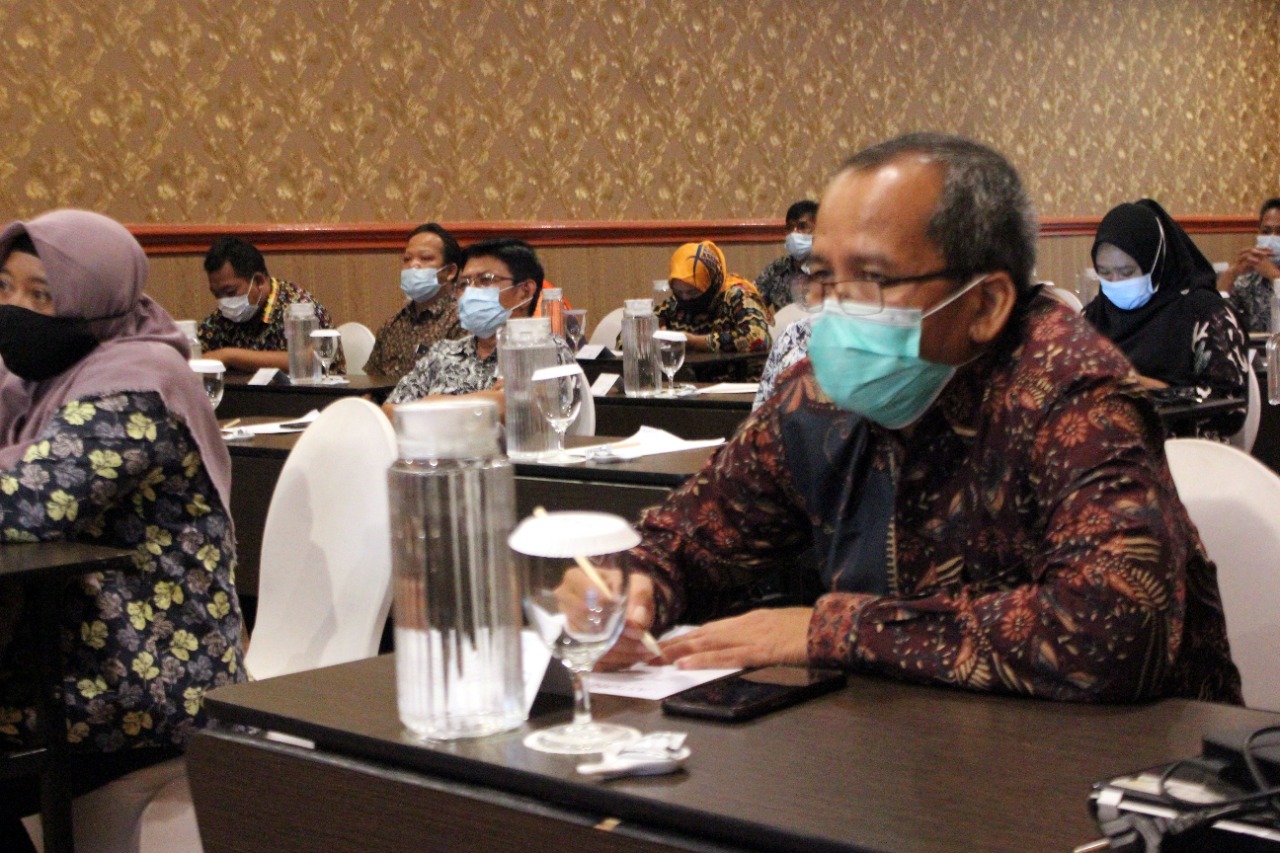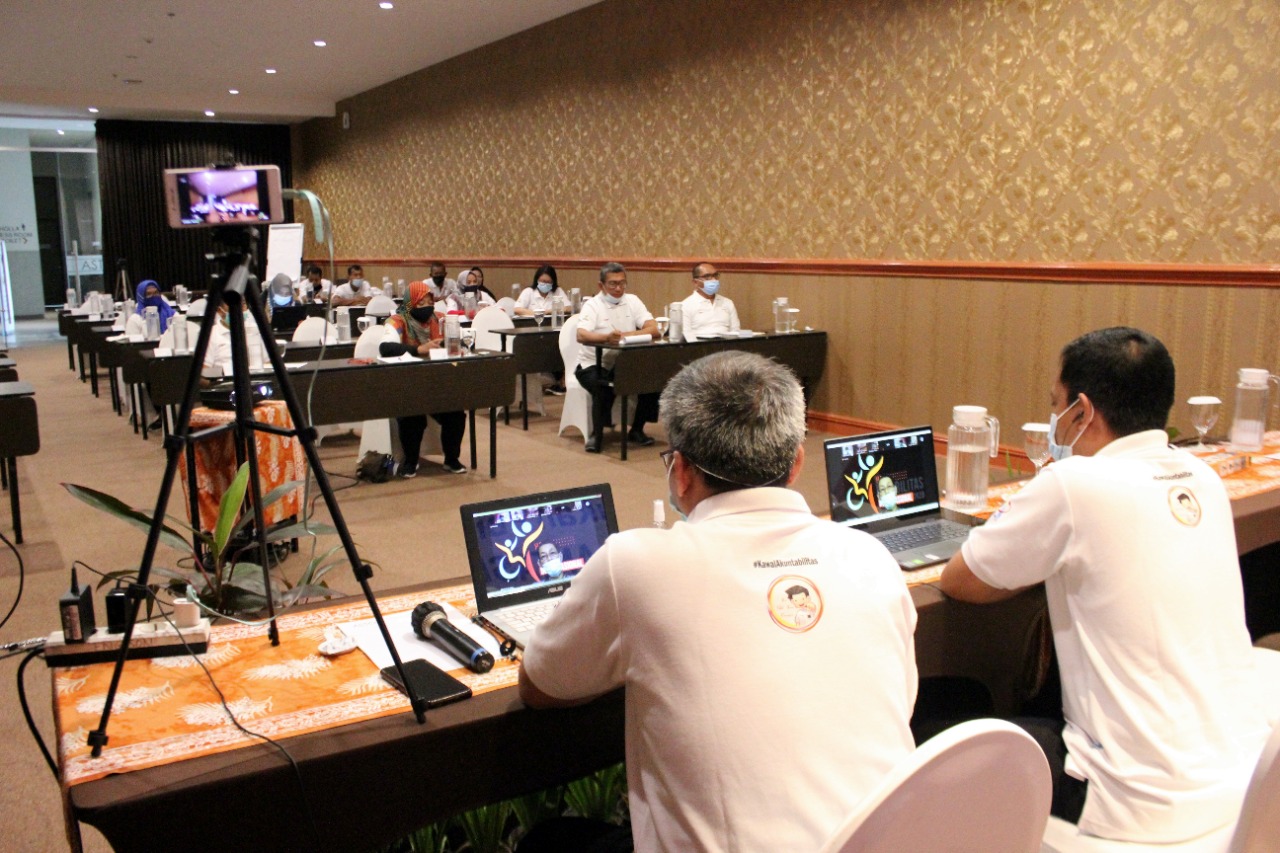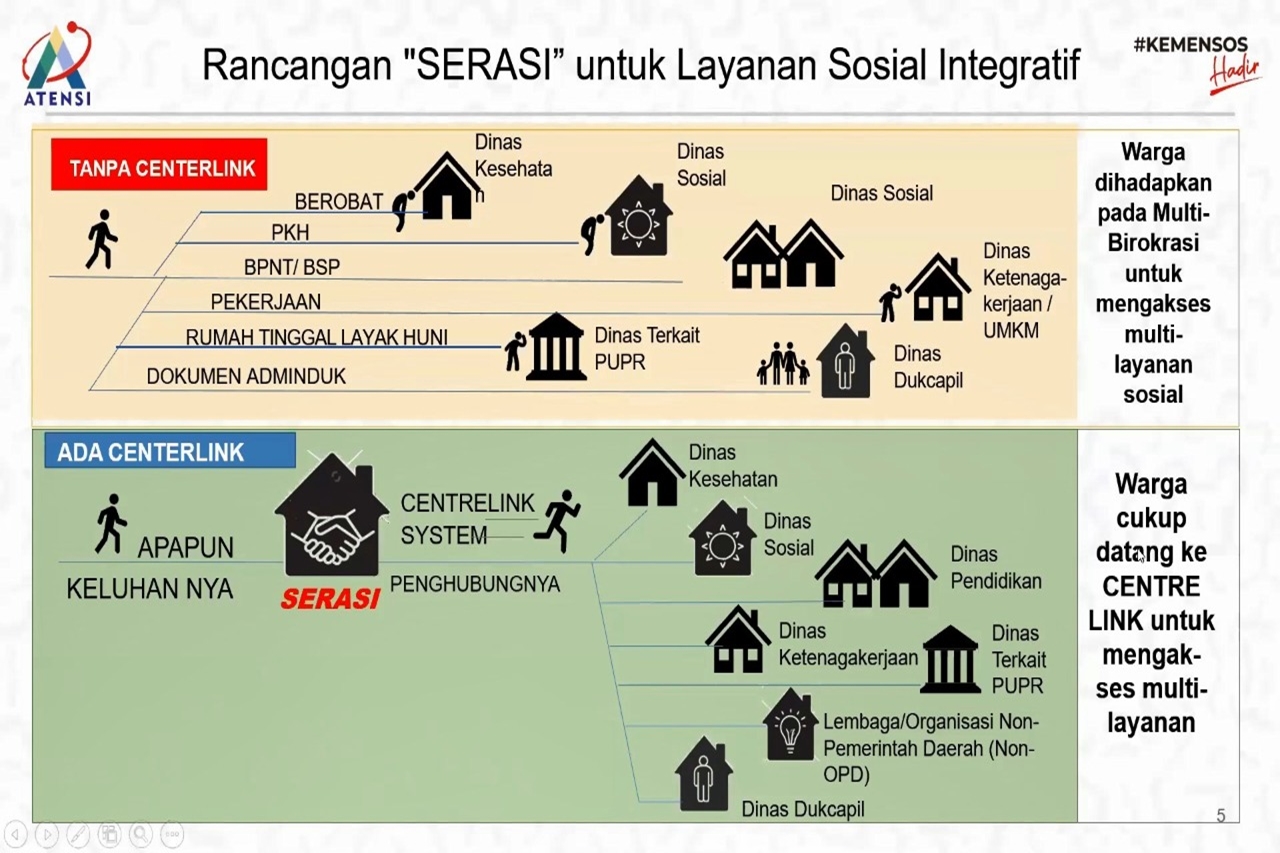BANYUWANGI (December 10, 2020) - "Antasena" Children's Center which is one of the Technical Implementation Units (UPT) belonging to the Ministry of Social Affairs carries out Human Resource Capacity Building (HR) activities in response to the appointment of "Antasena" Children's Center as a pilot project for the Social Service Center (SERASI) and supports the implementation of Rehabilitation Assistance Social (ATENSI). The activity which was held at the Aston Banyuwangi Hotel was attended by 40 people consisting of structural officials, special functional officials, general functional officials and government employee non civil servants and took place from 7 to 10 December 2020.
The purpose of this activity is to increase knowledge and understanding of the ATENSI and SERASI programs for "Antasena" Children's Center officers so that in their application later misunderstandings and differences in perception can be minimized. This activity is also expected to increase cohesiveness and synergy between employees so that they can provide excellent service to stakeholders. That's what the Head of the "Antasena" Children's Center, Faisal, said when starting the event.
There were 4 resource persons who filled out this activity, namely Director General of Social Rehabilitation Harry Hikmat, Director of Child Social Rehabilitation Kanya Eka Santi, Head of the Bureau of Personnel and Organizations of the Indonesian Ministry of Social Affairs Amin Rahardjo and from the Inspectorate General represented by Middle Auditor Sri Handayani.
Harry said that there would be a simplification of the Center nomenclature to avoid the chance of stigmatizing children, and that later "Antasena" would become an "Antasena" Children's Center only.
The purpose of this activity is to increase knowledge and understanding of the ATENSI and SERASI programs for "Antasena" Children's Center officers so that in their application later misunderstandings and differences in perception can be minimized. This activity is also expected to increase cohesiveness and synergy between employees so that they can provide excellent service to stakeholders. That's what the Head of the "Antasena" Children's Center, Faisal, said when starting the event.
There were 4 resource persons who filled out this activity, namely Director General of Social Rehabilitation Harry Hikmat, Director of Child Social Rehabilitation Kanya Eka Santi, Head of the Bureau of Personnel and Organizations of the Indonesian Ministry of Social Affairs Amin Rahardjo and from the Inspectorate General represented by Middle Auditor Sri Handayani.
Harry said that there would be a simplification of the Center nomenclature to avoid the chance of stigmatizing children, and that later "Antasena" would become an "Antasena" Children's Center only.
“We have got a strong legal standing because the Minister of Social Affairs Regulation (Permensos) No. 16 of 2020 concerning Social Rehabilitation Assistance has been signed by the Minister of Social Affairs.
This regulation is an omnibus law that will make all centers have to adapt to this Permensos, because the centers have the task of carrying out direct services to beneficiaries including children, families and the surrounding environment. In essence, we are not only talking about children who need special protection, neglected children and street children so that until now Ministry of Social Affairs orientation only works for children who have become victims of violence, victims of neglect, victims of discrimination, victims of exploitation. However, we have to think about orientation as a child service center. So, without exception, we must respon to all children who need social services. Thus, we have to start thinking not to specialize in AMPK. This will be stated later in the Director General Regulation of ATENSI Operations," said Harry.
“In the future, our orientation will be not only Social Rehabilitation, but also Social Habilitation, from an early age. If Social Rehabilitation is a concept, people need to be re-functionalized because one thing is not a factor from birth, but Habilitation is a factor from birth. I will also be going to the "Antasena" Children's Center in the near future to discuss the design of the Social Service Center or SERASI and also the engineering design details for the renovation of the "Antasena" Children's Center. SERASI or Centrelink, the room settings must be prepared immediately, it is hoped that it will be like a hospital and the Centrelink System network or application with all social services,” continued Harry.
This regulation is an omnibus law that will make all centers have to adapt to this Permensos, because the centers have the task of carrying out direct services to beneficiaries including children, families and the surrounding environment. In essence, we are not only talking about children who need special protection, neglected children and street children so that until now Ministry of Social Affairs orientation only works for children who have become victims of violence, victims of neglect, victims of discrimination, victims of exploitation. However, we have to think about orientation as a child service center. So, without exception, we must respon to all children who need social services. Thus, we have to start thinking not to specialize in AMPK. This will be stated later in the Director General Regulation of ATENSI Operations," said Harry.
“In the future, our orientation will be not only Social Rehabilitation, but also Social Habilitation, from an early age. If Social Rehabilitation is a concept, people need to be re-functionalized because one thing is not a factor from birth, but Habilitation is a factor from birth. I will also be going to the "Antasena" Children's Center in the near future to discuss the design of the Social Service Center or SERASI and also the engineering design details for the renovation of the "Antasena" Children's Center. SERASI or Centrelink, the room settings must be prepared immediately, it is hoped that it will be like a hospital and the Centrelink System network or application with all social services,” continued Harry.
Director of Child Social Rehabilitation, Kanya Eka Santi emphasized the importance of implementing Foster Care or the Child Care System. “Ensuring that all children are cared for in the family and ensuring that children do not leave the family's care. Except when the child is in an emergency situation that requires the child to leave the family. The stepmother/stepfather is the primary family. If there is no primary family, then ideally we channel it to foster care, one year of care. Then there are guardianship, adoption and Children Social Welfare Institution (LKSA) as surrogate family-based care,” Kanya said.
The next speaker was the Head of the Ministry of Social Affairs' Organization and Personnel Bureau, Amin Raharjo. He conveyed about the role and implementation of the transition from structural positions to functional positions, the aim of which was to create a more dynamic bureaucracy. Amin also said to always apply health protocols not only during human resource improvement activities, but in daily life both at home and at work and when traveling.
The Inspectorate General of Social Rehabilitation, represented by Middle Auditor Sri Handayani, emphasized the importance of financial accountability administration.
The activity was continued with a discussion and rounding of the material results by the Head of the "Antasena" Children's Center.
The next speaker was the Head of the Ministry of Social Affairs' Organization and Personnel Bureau, Amin Raharjo. He conveyed about the role and implementation of the transition from structural positions to functional positions, the aim of which was to create a more dynamic bureaucracy. Amin also said to always apply health protocols not only during human resource improvement activities, but in daily life both at home and at work and when traveling.
The Inspectorate General of Social Rehabilitation, represented by Middle Auditor Sri Handayani, emphasized the importance of financial accountability administration.
The activity was continued with a discussion and rounding of the material results by the Head of the "Antasena" Children's Center.
 Bahasa
Bahasa
 English
English





